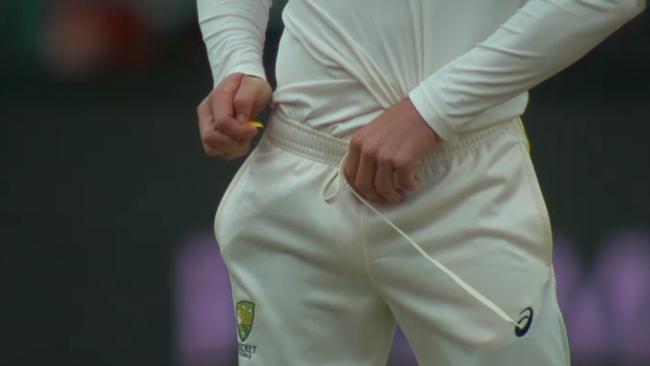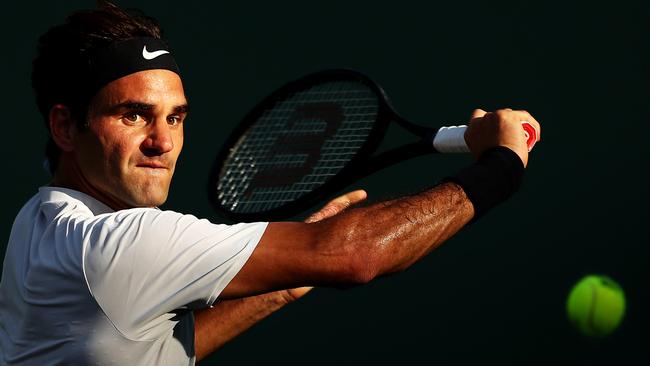Game, set, snatch: How Channel Nine lost the cricket
IT’S the biggest sport switcheroo in decades. Nine has lost the cricket, tennis is gone from seven. Here’s how 40 years were thrown out the window.
Cricket
Don't miss out on the headlines from Cricket. Followed categories will be added to My News.
THE headlines are screaming “Nine lost the cricket”.
After more than four decades, the network — which became synonymous with not only the game, but the initially controversial, then wildly popular Kerry Packer-led World Series reinvention of it — will no longer be the go-to place for the first Test of the Australian summer.
News that Foxtel and Seven had secured the rights in a mammoth $1.2 billion deal with Cricket Australia signalled the final piece in the puzzle of a new era of sports coverage in Australia.
It’s the biggest television sport shake-up, and switcheroo is now Australian television’s biggest sport.
At the end of March, Channel Nine served up a sizzling ace when it stitched up a $300 million, five-year deal to snatch the broadcast rights to premium tennis events including the Australian Open from Seven.
The five-year deal will see Nine televise the local Grand Slam as well as the Hopman Cup and the Brisbane, Sydney and Hobart Internationals from 2020.
Seven and Foxtel returned serve by snatching the cricket.
GAME, SET, SNATCH
Nine, a network on the up but still struggling to shed its old, blokey image and in need of big guns to launch its TV year, targeted the tennis as the answer. The sport has a 50/50 male/female balance in terms of viewership and participation.
Seven had held the tennis rights for more than four decades, and Tennis Australia had made it clear it wanted more from the traditional broadcast rights holder.
Industry insiders say Seven took its eye off the ball, and Nine pounced with a bombshell offer way too good for Tennis Australia to refuse.
It blew Seven, biding its time on the deadline for the new contract, out of the water when it came to counter offers.
After four decades service to the tennis, it had been caught napping.
But it cost the network. Having shelled out for the tennis, while keeping the cricket would have been nice, no way was Nine going to pay top dollar for it.
IT’S NOT JUST CRICKET
Cricket Australia had been demanding big bucks for Nine to renew its deal.
It had already rejected a joint proposal from Nine and Ten — and, seemingly tone-deaf to the public mood over the ball-tampering scandal — still reckoned its stocks were high.

It made financial sense for Nine and Ten to join forces to maintain the sporting status quo: Nine had paid Cricket Australia $500 million in the last rights deal, but the popular and increasingly lucrative Big Bash rights had been snapped up by Ten.
Last week Nine and Ten reportedly increased their bid understood to be valued around $150 million annually, or $900 million over the six years of the deal.
Cricket Australia was unmoved, and earlier this week, sources say, Nine retired from the run chase, took its bat and ball, and went home.
That left Foxtel and Seven as top order batsmen in a new Cricket Australia partnership.
Today, it all hit home, with Seven and Foxtel landing Cricket Australia’s media rights for internationals and the top-rating Big Bash League.
Under the deal expected Foxtel will have exclusive rights to some Big Bash matches, and simulcast Tests and limited overs matches.
It’s believed Seven has committed to estimated annual payments of $75 million or $450 million over six years. Meanwhile Foxtel will pay $105 million a season ($630 million in total)
Today’s deal shows Cricket Australia was right to back itself, even with the Australian cricket teams’ stocks publicly at a low.
WHO WINS?
Who wins in the sport switcheroo remains to be seen.
Certainly Seven has the first immediate problem on its hands — in 2019, how to juggle its final broadcast of the Australian Open with its inaugural broadcast of the Big Bash cricket. The two events will clash at some point.
The longer game is how each sport fares on their new networks.
The absence of Test cricket leave Nine with a lot of empty broadcast hours to fill over a long hot summer. But it also now has access to a lot of saved dollars to sink into programs to fill them.
Meanwhile, Seven, already cash-strapped has to make the cricket work: with new commentators, new scheduling, and new approaches to coverage.
With a new dedicated channel, Fox Cricket, Foxtel will help out with some of those scheduling woes as well create a stable of new cricket shows.
According to CEO Patrick Delany, Foxtel’s offering “will be like nothing fans have experienced”.

There’s also the fact that the investment won’t have a cash return: financial analysts suggest Nine was losing $30-40 million a year on its Summer of Cricket telecasts.
While Nine’s very identity came form its Summer of Cricket, Seven’s summer of tennis had for at least the past decade been more valuable in terms of a launching pad for each ratings year.
‘AFTER THE TENNIS’
There’s a reason TV viewers hate the slogan “after the tennis”.
It was rammed mercilessly down tennis viewers throats as Seven previewed its big shows for its television year.
Whether viewers loved or hated the shameless cross-promotion, it was a recipe that worked: it’s what helped make shows like My Kitchen Rules become a TV juggernaut.
The move was so successful that in recent years, Seven has kicked off its new ratings pullers straight out of the gland slam.
It was the mark of Seven’s year-starting success that it would declare the new TV year on, rather than wait for the start of the traditional ratings season to launch its big guns.
From 2020, Nine will have the chance to take charge.
The loser is Ten with the loss of the Big Bash rights.
The action-packed short form of the game is TV gold, in terms of broadcast length, advertised dollar opportunity and family-friendly demographics. Look at the make-up of the crowd at any BBL match and that's clear.
The $20 million-a-year Ten had been paying for it was an absolute bargain.
Its value as a prime-time product will be relentlessly capitalised on by Seven.
Cricket Australia says about 80 per cent of all international cricket will still be available via free-to-air.
The mix of free-to-air television broadcast, subscription TV and digital organisations under which cricket will be seen in Australia under the new deal is a reflection of the reality of the business of sport on television.
It’s similar to what Australian viewers see with the NRL, and the AFL.
It’s just that now, it has turned up the heat on our biggest summer sport.
Until the ratings come in, TV networks can claim bragging rights, but not wins.
These are Testing times. The score stands at deuce.



